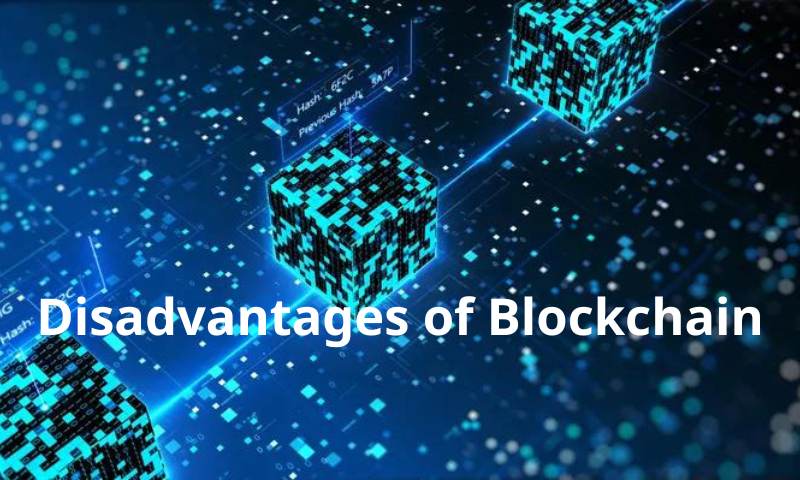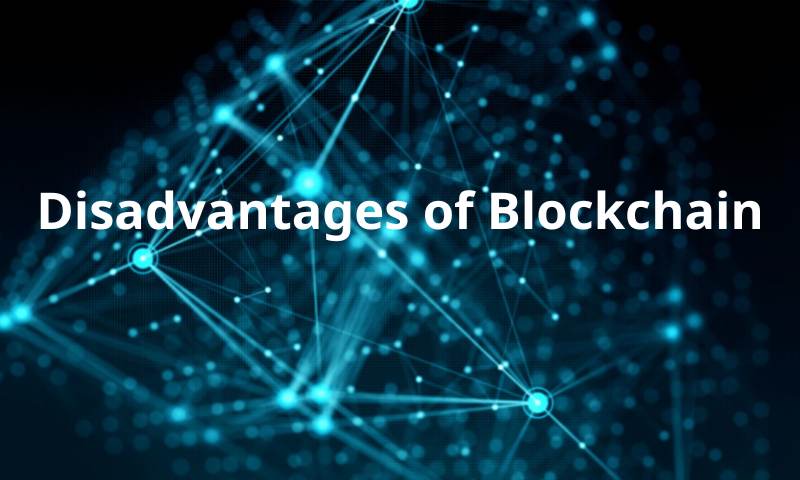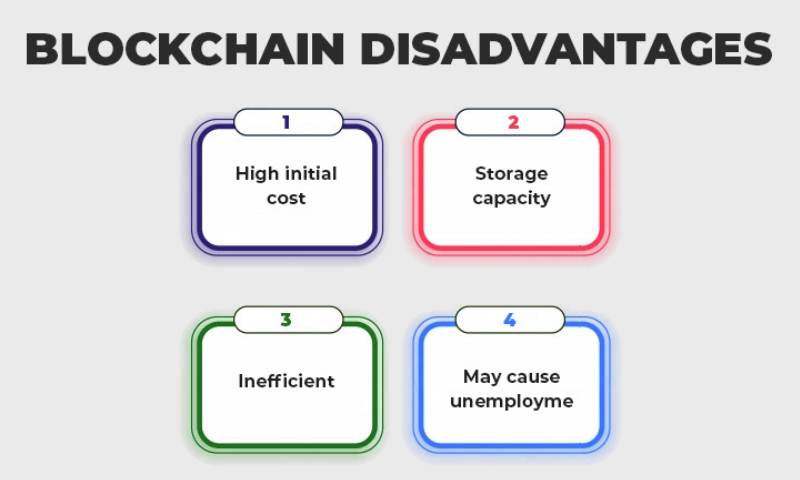Disadvantages of blockchain may not headline as many articles as its perks, but let’s not turn a blind eye. Sure, this tech has carved a path for digital innovation, yet it’s not without its fair share of hurdles. It guzzles energy like a starved beast and carries an environmental weight we can’t ignore. On the tech front, it’s like a complex puzzle that needs a tech whiz to solve. Plus, there’s a storm brewing over our heads with security and privacy debates. And socially speaking? Well, the legal snags and job fears are as real as they get. Dive in as we strip away the hype and lay out the bare bones of blockchain blues.
Understanding the Environmental and Energy Challenges of Blockchain
The High Energy Consumption of Blockchain Technology
Many worry about how much power blockchain uses. Each blockchain “block” needs a lot of energy. Computers solve hard puzzles to make new blocks. This takes lots of electricity, often from fuels that pollute.
Miners, the folks who make blocks, use more power sometimes than whole countries. Think, for a moment, of all those computers running non-stop. It’s huge, right?
Indeed, some blockchains are trying to use less energy. They change the way they create blocks. These new ways can help, but they’re not everywhere yet.
Evaluating Blockchain’s Environmental Impact
Blockchain can harm our planet. With all the energy it uses, it can make more pollution. This is bad for the air we breathe and the climate we live in.
Many people in blockchain want to make things better. They look for energy that doesn’t hurt the earth. Like sun or wind power. This is good, but it’s hard to do for everyone.
Still, blockchain has good sides. It keeps data safe and lets us do new things with money. But we must look at the whole picture. We must find ways to use blockchain without hurting the earth.
Our challenge is big. We need to keep our air and water clean. Blockchain must help, not harm, this goal. We all have to think and act to make blockchain better for our planet.
Addressing the Technical Limitations and Complexities of Blockchain
The Scalability Issues Hindering Blockchain Efficiency
Let’s talk about blockchain and its growing pains. Think of it like a busy highway. As more cars zip in, traffic jams can happen. This is like what’s happening with blockchain – it’s struggling to keep up as more people want in. We call this the scalability issue. Blockchain’s design is sturdy but not made for a traffic surge. When many transactions hit the network at once, it can slow to a crawl.
Some might ask, “What’s scalability got to do with blockchain?” Well, it’s about handling more action without losing steam. If blockchain can’t scale, it can’t grow with us, and that’s a big problem. It’s like a game that gets so slow, everyone stops playing. We want fast, easy, and smooth. Right now, blockchain’s not there yet.
What causes these slowdowns, exactly? Every transaction must go to every user to check and agree. This can take time, and as the user list grows, the process gets even slower. So when lots of folks start trading at once, the blockchain can bog down, like a computer with too many windows open.
To fix this, some blockchain networks want to build extra lanes – think side chains. These can take some of the load off the main chain. Others look at trimming transaction size or changing how we agree on new blocks. These fixes aim to make blockchain zoom again, no matter how many are along for the ride.
Overcoming the Complexity and Cost of Implementing Blockchain Systems
Ever try to fix a fancy gadget with a whole bunch of screws and parts? Blockchain can seem that tough to set up, too. It’s not just “plug and play.” It gets knotty, involving tricky tech, codes, and lots of planning. And the price tag matches the complexity. Firms must shell out lots of dough for all this, from the tech itself to the smart folks who run it.
The cost to implement blockchain is more than just buying software. It’s an investment in a whole new way to keep records safe and shared. But for small players, this cost can be too steep. It’s like being asked to buy a top-notch racing bike when all you need is to scoot around your block.
So, what’s the answer? For starters, more tools and services that simplify blockchain might help. These can lower the barrier so even smaller businesses can hop on the blockchain bike. Then we have to spread the know-how. With more experts around, building and running these systems gets smoother and cheaper over time.
Moving forward, these tech tweaks and a bigger expert pool could make blockchain a better fit for all, big or small. It’s about shaking off the ‘elite club’ vibe and opening the doors wide. Imagine a world where blockchain is as easy as setting up a lemonade stand, with tools and tips for everyone ready to go. That’s the goal – and it’s one worth aiming for.
Assessing the Risks and Concerns Around Blockchain Security and Privacy
Analyzing Security Vulnerabilities in Blockchain Networks
Let’s chat about the safety of all this blockchain stuff. For all its perks, it can have weak spots that hackers might love. Even though blockchain can help keep data safe, it’s not perfect. Stuff folks think is safe might not be. For example, if someone finds a flaw, they could mess with a blockchain and take control if they grab more than half of it. That’s scary, right?
Some smart people might say blockchain’s super safe because it’s spread out. But the bad guys are clever too. They know ways to sneak in. They might fake a transaction or confuse the network. Even worse, they might pull off a ‘51% attack’. That’s where they control most of the blockchain and can stop other people’s transactions or even change old ones.
Now, you might think, “But isn’t it always checking itself to be safe?” Sure, it does. Every block in the chain has a unique code. If someone tries to mess with it, the code changes. Then all the other computers check the code. If it doesn’t match, they know something’s up. It’s like having a bunch of friends who always double-check if you locked your door.
A big problem here is updates. Everyone on the network needs to agree to change anything. Getting everyone to say “Yep, let’s do it” is tough. It’s like trying to pick a movie that all your friends want to watch. So it’s hard to fix flaws fast.
These weaknesses don’t show up every day. But it’s worth knowing that they’re there. We gotta keep our eyes open and work to make things better. For now, think of blockchain like a super-helper that still needs a bit of help itself.
Scrutinizing Blockchain Privacy Concerns and Anonymity
Now, let’s peel into privacy with blockchain. It can keep secrets, but not always. Say you’re sending virtual money to a buddy. You’d think no one else would know, right? Not so fast. Transactions are public for everyone to see. They might not see your name, but they can see what went down. This can be good or bad, depending on how you look at it.
We need to watch out for something called ‘anonymity’. With blockchain, people think their info stays hidden. But in certain cases, you can figure out who’s who. It’s like leaving breadcrumbs that someone can follow to find you.
And then there’s private info sharing. Let’s say you keep some details only for you. Normally, that’s cool. But on blockchain, keeping it secret isn’t so clear-cut. Hackers might find ways to peek at what they shouldn’t see.
Think about it like this. You have a diary with a lock. You think, “No one can read this but me.” But what if someone’s really good at picking locks? Even if you keep your diary in a safe spot, a really nosy person might still try to read it.
We can’t forget these things. If we want to trust blockchain fully, we have to make sure it earns that trust. It takes work to close the gaps where sneaky folks might try to peek. Just like with your diary, you’d want the best lock and maybe even a secret code.
Let’s be real here. We love what blockchain can do. But we have to treat it like anything else we use — by knowing its flaws and being smart about them. It can do some pretty cool things, but we have to handle it with care. Just like that new bike you got. You wouldn’t ride without brakes, right? Same thing.
Navigating the Social and Regulatory Landscape of Blockchain Adoption
Understanding Blockchain Regulatory Challenges and Legal Implications
Let’s talk about laws for blockchain. Every country has different rules. This makes things hard. When a blockchain crosses borders, which laws should it follow? Some people can’t use them well. Governments worry about how to control them. We need clear laws for safety and growth.
For instance, rules on how we use money are strict. But blockchain can make money move in new ways. So we need new rules. New tech often gets ahead of old laws. This can cause problems. People can get confused. They don’t know what’s safe or legal. This makes them less likely to use blockchain.
We also have to think about how blockchain can affect our privacy. How do we keep our info safe? Blockchain is open to see. So, we need to make sure it’s also private. But it’s hard to change a blockchain. If someone adds a mistake, it’s tough to fix it.
Now think about if you ran a blockchain company. The law says you must know who you deal with. But blockchain does stuff by itself. How can the law fit here? We need to figure this out. People need rules they can follow.
The Social Implications of Blockchain on Employment and the Digital Divide
Blockchain is changing the way we work too. Jobs in banking could change a lot. People might not need bankers same as now. It can make some jobs go away. But it can also make new jobs. We need more people who know about blockchain. We don’t have enough experts now.
The digital divide is another big thing. Not everyone has good internet. Blockchain needs good internet to work well. So, what about people who don’t have it? They might get left behind. This isn’t fair.
And there’s more. Think about people who don’t trust computers much. They might not want to use blockchain. We need to help them understand how it works. That way, they can feel okay using it.
Lastly, when people talk about the cost to use blockchain, it can be a lot. Starting a blockchain isn’t cheap. So, small companies might find it too hard. Only big companies can pay for it. This isn’t good for competition.
In all, blockchain has some big challenges outside of tech. Laws and social issues matter a lot. We must deal with them to do blockchain right. It’s important. But it’s not easy. We’ll need lots of smart and caring people to solve these problems. They must work together. Then, we can all enjoy what blockchain has to offer.
In this post, we’ve looked hard at blockchain’s big issues. High energy use can hurt the planet, and we know we must fix it. We talked about how hard it is for blockchain to handle more users and the costs to set it up. I’ve seen security risks cause worry, and privacy in blockchain isn’t perfect.
We also saw how laws and society respond to blockchain. It can change jobs and who gets left behind in our digital world.
So, what’s my final take? We can’t ignore these problems. But with smart folks and hard work, we can overcome them. Blockchain has a lot to offer, and I believe we can make it good for everyone. Let’s work together to better our future with blockchain.
Q&A :
What are the common challenges associated with blockchain technology?
Blockchain technology, while innovative, comes with several challenges. For one, scalability is a significant issue, as the growing size of the blockchain can lead to slower transaction times and higher costs. Additionally, due to the immutable nature of blockchain, any accidental errors are irreversible, potentially leading to permanent loss of data or funds.
How does blockchain impact the environment negatively?
The environmental impact of some blockchain applications, especially those that rely on proof-of-work (PoW) consensus mechanisms like Bitcoin, is substantial. These require vast amounts of electrical energy for mining operations, leading to a large carbon footprint.
Can blockchain systems be vulnerable to security risks?
Despite the high-security standards of blockchain, they are not completely immune to risks. For instance, if more than half of the computing power within a blockchain network is controlled by one entity, it can lead to a 51% attack, allowing them to manipulate the network. Moreover, smart contract vulnerabilities and code exploits can also pose significant security threats.
Is blockchain technology complex for average users to understand?
The complexities of blockchain can be a barrier to adoption, as understanding the nuts and bolts of the technology involves a steep learning curve. This can hinder its widespread acceptance, as users might be reluctant to use something they do not fully comprehend.
Why is maintaining privacy challenging with blockchain technology?
While blockchain is often praised for enhancing security, it can pose privacy concerns because transaction histories are transparent and can be viewed by anyone within the network. This could lead to unintended privacy breaches, especially in public blockchain networks where anonymity is not guaranteed.


